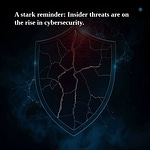Introduction
Ransomware attacks have surged in frequency and severity, particularly in sensitive sectors such as education. These incidents not only threaten data integrity but challenge the very fabric of trust within the systems we rely on. The recent PowerSchool breach is a glaring example of the ransomware landscape and provides invaluable insights into the complexities we now face. In this article, we will examine the technical specifics of the PowerSchool attack, explore its implications—including the insidious tactics used by attackers—and present actionable strategies organizations can adopt to bolster their defenses against such threats.
Overview of the PowerSchool Breach
On December 28, 2024, PowerSchool, a leading provider of online education software, experienced a significant breach compromising sensitive personal information of over 60 million students and 9.5 million educators. The attackers gained unauthorized access to the system via compromised credentials from the customer support portal linked to PowerSchool’s Student Information System (SIS). In a controversial move, PowerSchool paid an undisclosed ransom to prevent the publication of their stolen data.
Data Compromised
The breached data included a range of personally identifiable information (PII), such as: - Full names
- Contact information
- Dates of birth
- Social Security Numbers (SSNs)
- Social Insurance Numbers (SINs)
- Limited medical alert details
While PowerSchool later confirmed that credit card and banking information was not compromised, the potential for identity theft remained a grave concern for affected individuals.
The Fallout: Double-Extortion Tactics
Despite PowerSchool's attempt to curb the damage by paying the ransom, the repercussions illuminated the evolving tactics of cybercriminals, specifically double-extortion. Just months after the initial breach, attackers began directly contacting school districts, threatening to make sensitive data public unless additional ransom payments were rendered. This alarming trend underscores a critical realization: paying a ransom does not signal the conclusion of a cyber incident but may well invite further exploitation.
The Role of Threat Actors
Experts link this wave of extortion to organized groups active in dark web marketplaces, notably ShinyHunters. This group is notorious for massive data breaches targeting educational and financial sectors. As a recent article from CyberScoop highlights, the rise of double-extortion incidents is increasingly prevalent in sectors where sensitive data can culminate in heightened pressure on victims. This strategy, which consists of holding data hostage while simultaneously pursuing additional ransom payments, marks a significant evolution in ransomware incidents.
Industry Insights and Analyst Perspectives
The Ethical Dilemma of Ransom Payments
Industry leaders, such as Dave Meister from Check Point Software, argue that paying ransoms often leads organizations into a cycle of wishful thinking. By paying, they mistakenly believe their data has been securely eliminated. Willy Leichter from PointGuardAI expresses the paradox; while paying might seem like a solution, it serves merely to propagate the cycle of cybercrime.
Grim statistics from a 2024 Cybereason report indicate that about 78% of organizations paying a ransom fall victim to further attacks, sometimes by the same threat actors. As Dr. Darren Williams, CEO of BlackFog, points out, there is a pressing need for organizations to move from merely reactive tactics to proactive prevention strategies that effectively limit data exfiltration from the get-go.
Proactive Measures to Combat Ransomware
To mitigate these risks, organizations should consider adopting a multifaceted approach to cybersecurity as proposed by frameworks like the NIST Cybersecurity Framework. Key strategies include: - Data Loss Prevention (DLP): Implementing DLP technologies to monitor and control data flows, safeguarding sensitive information before it can be compromised. - Zero Trust Architectures: Adopting a Zero Trust framework, requiring stringent verification for every user and device accessing resources—eliminating blind trust. - Incident Response Plans: Regularly developing and updating incident response plans ensures quick identification, containment, and recovery from breaches.
Moreover, continuous training for security teams must be prioritized, enabling them to address evolving threats effectively. By utilizing threat intelligence feeds, organizations gain real-time awareness of emerging vulnerabilities and known threats targeting their operations.
Conclusion
The PowerSchool incident serves as a stark reminder of the intricate and rapidly evolving nature of ransomware threats. Organizations must grasp that paying a ransom does not signify the end of the attack life cycle; instead, it risks inviting ongoing extortion. To protect against the evolving threats posed by ransomware, it is essential to prioritize preventive measures, foster a culture of security awareness, and leverage advanced security frameworks. As we look to the future, collaboration within the cybersecurity community will be vital to building resilient systems capable of weathering and neutralizing the impact of these daunting attacks.











Share this post